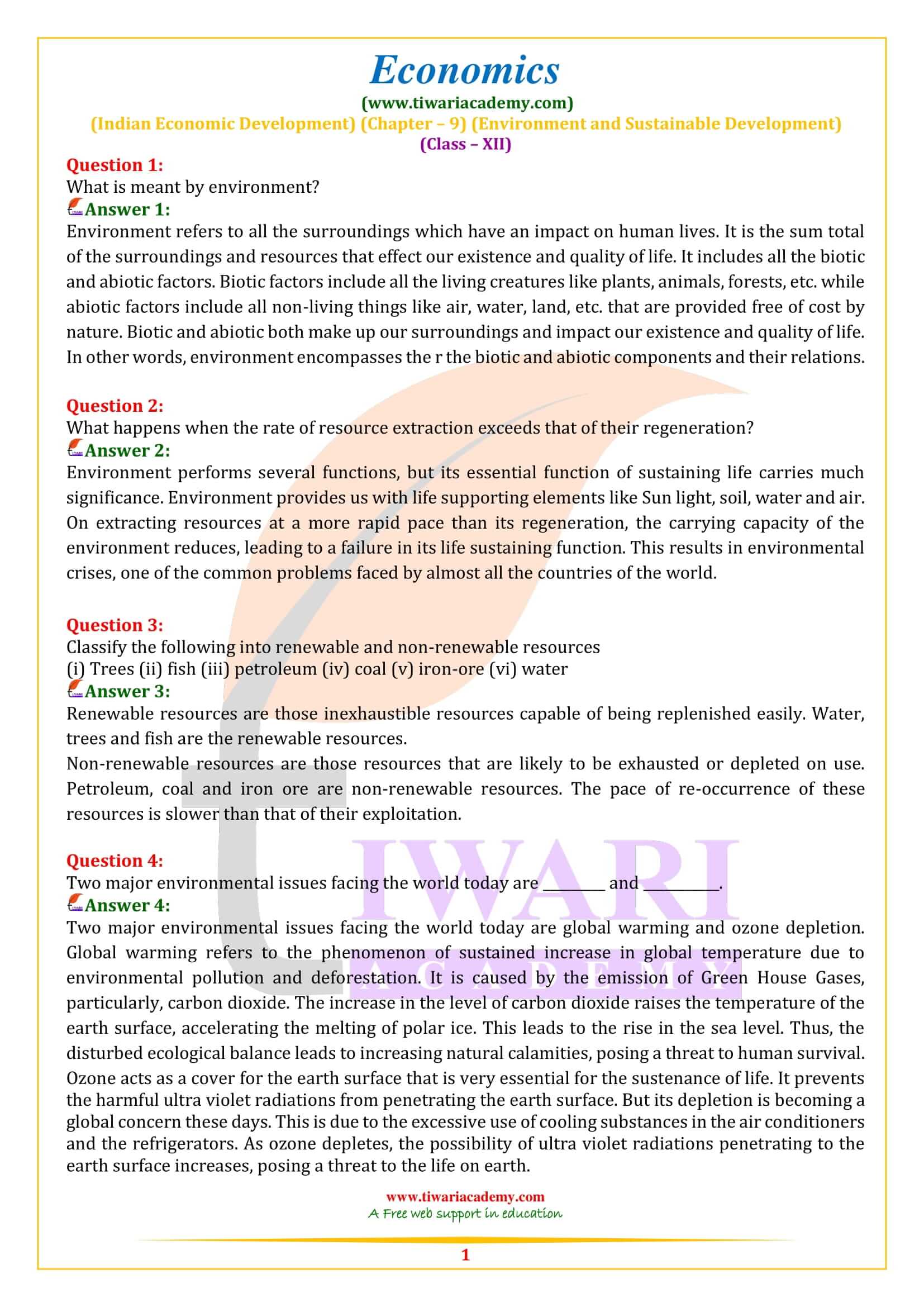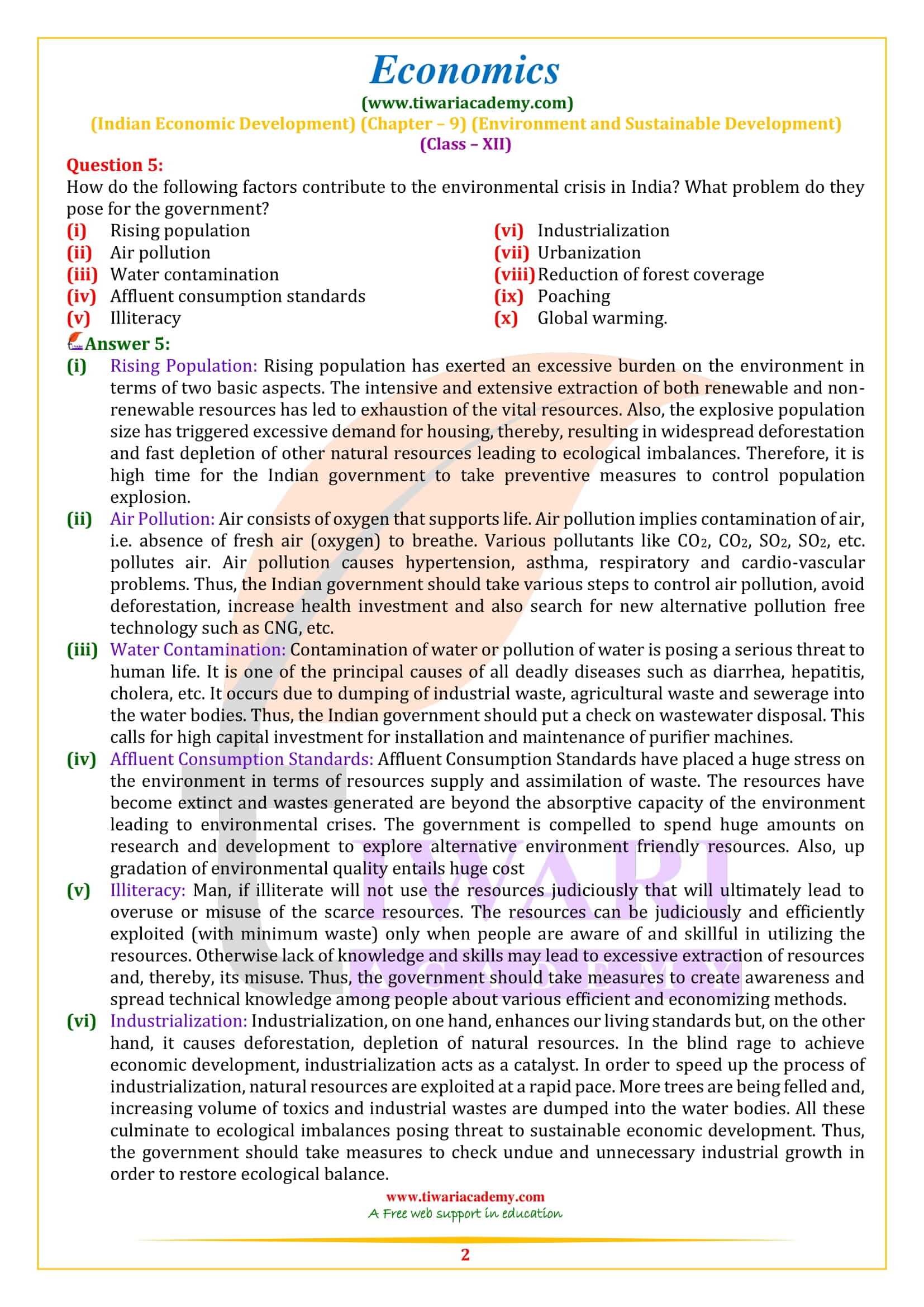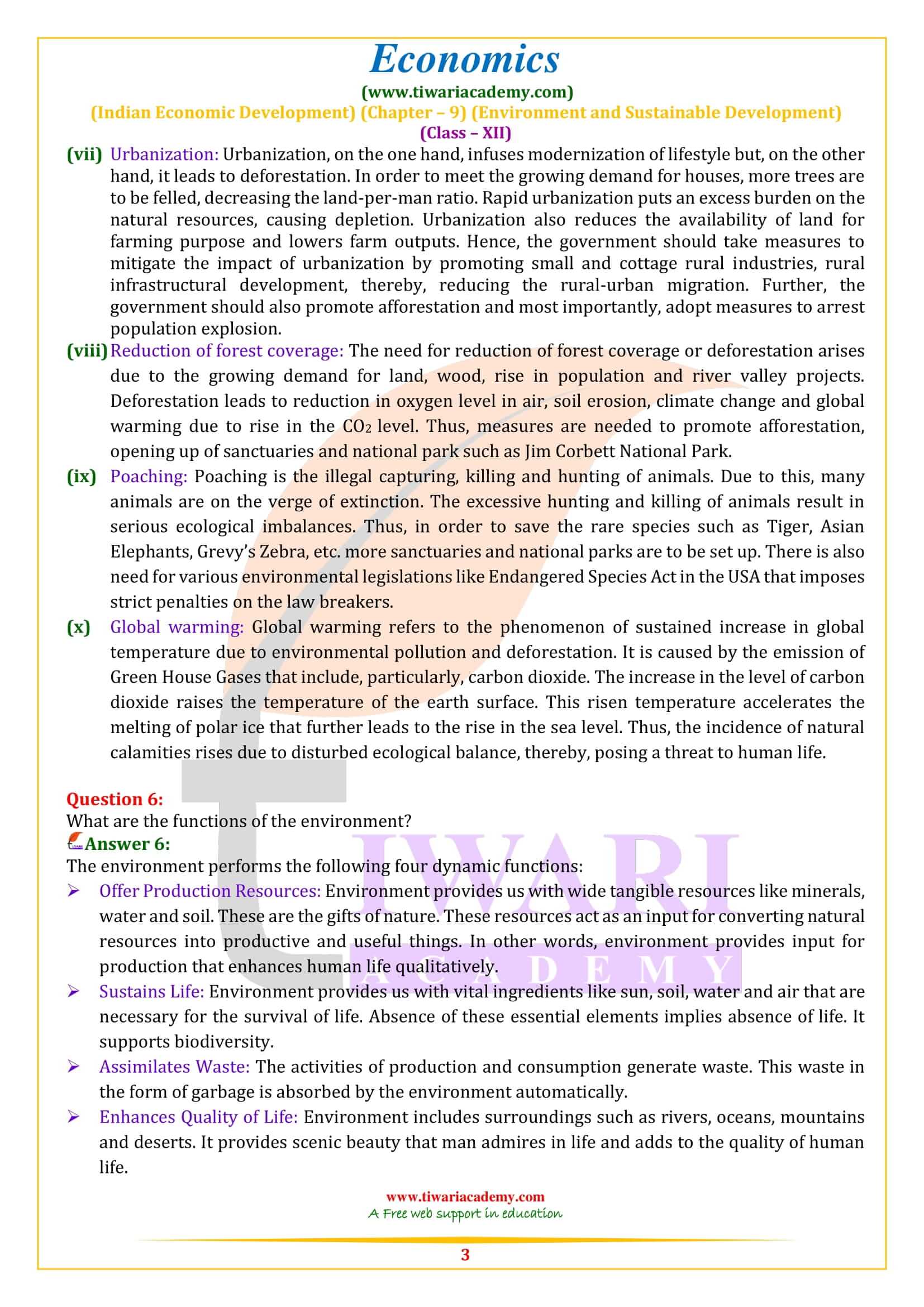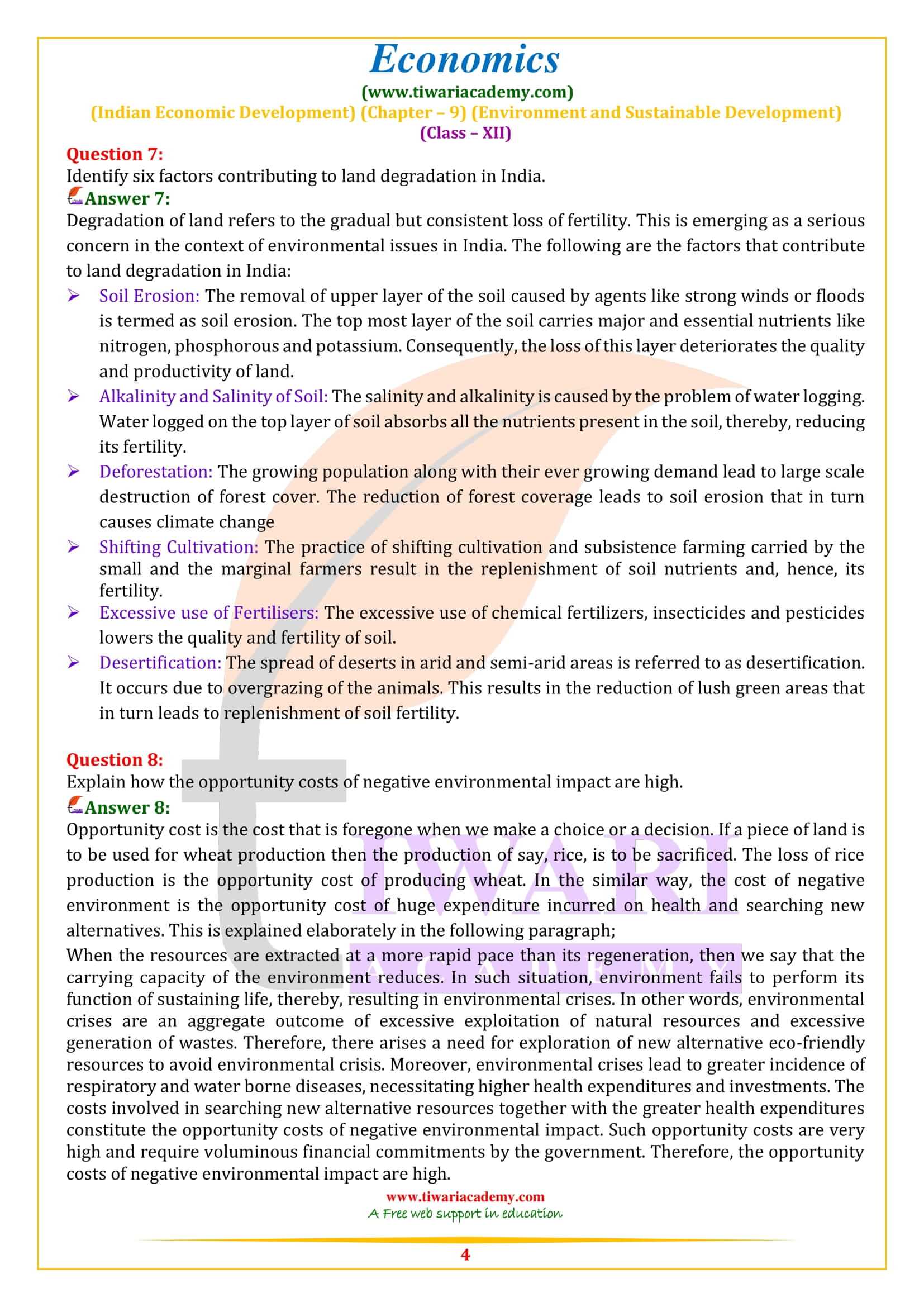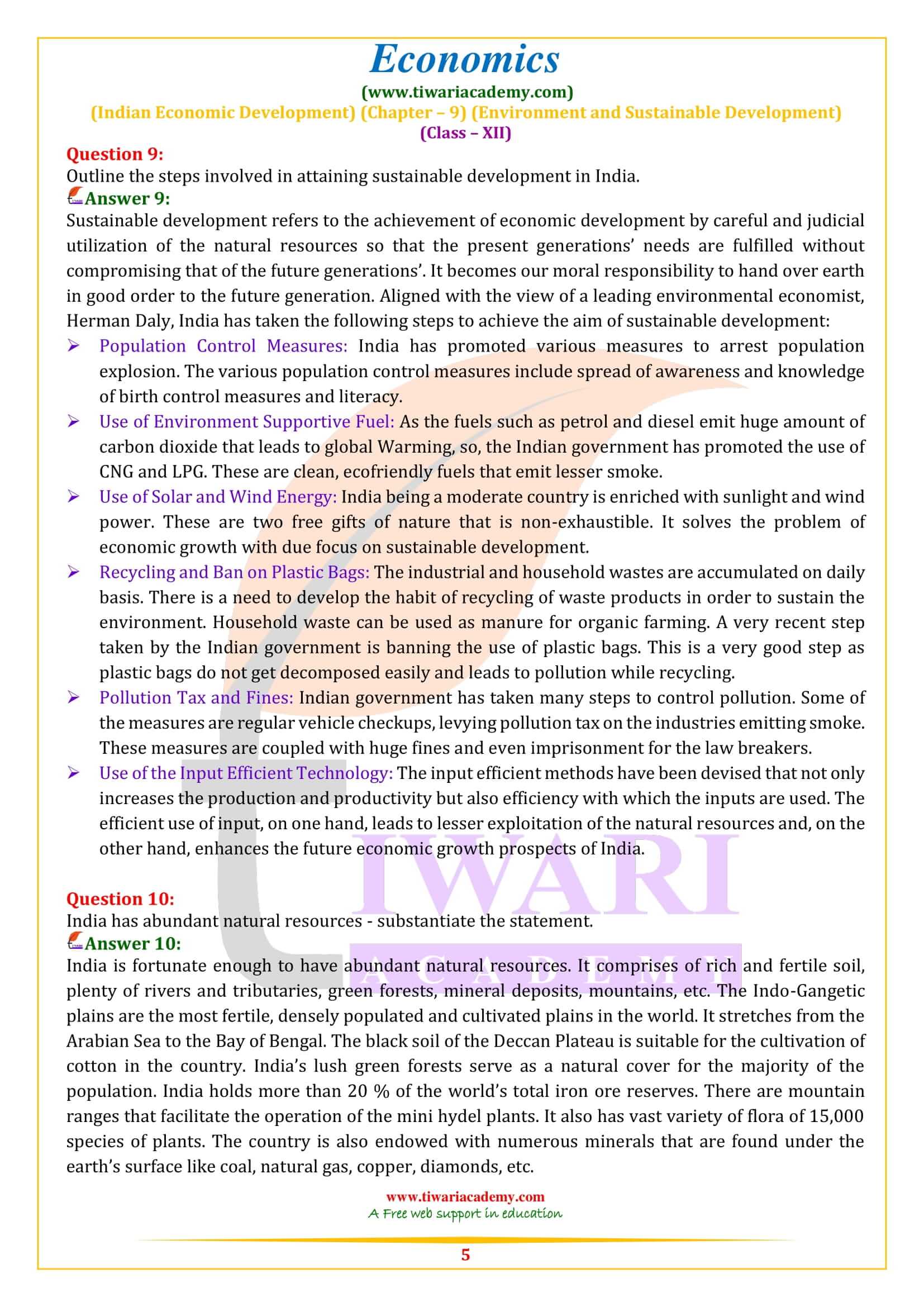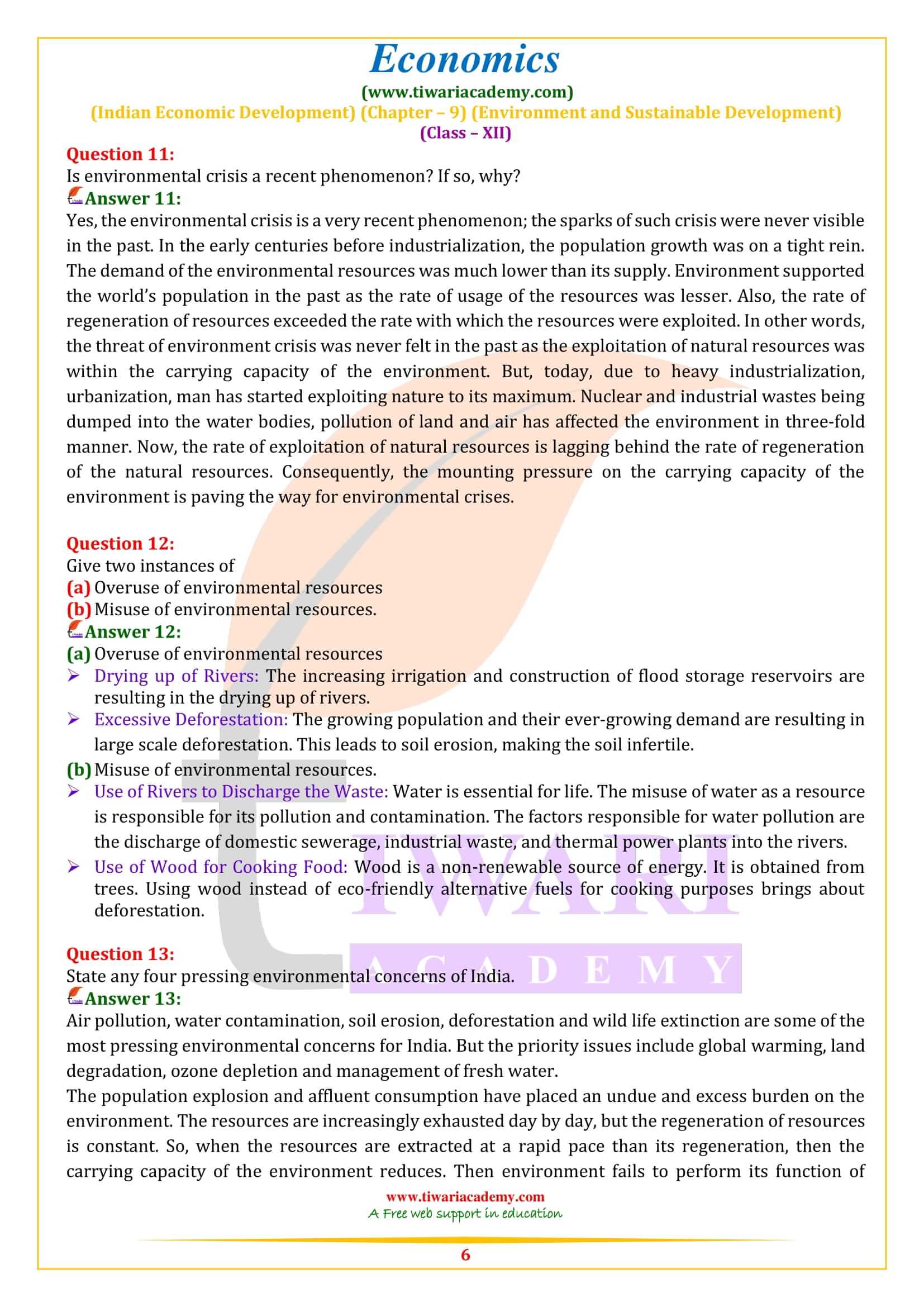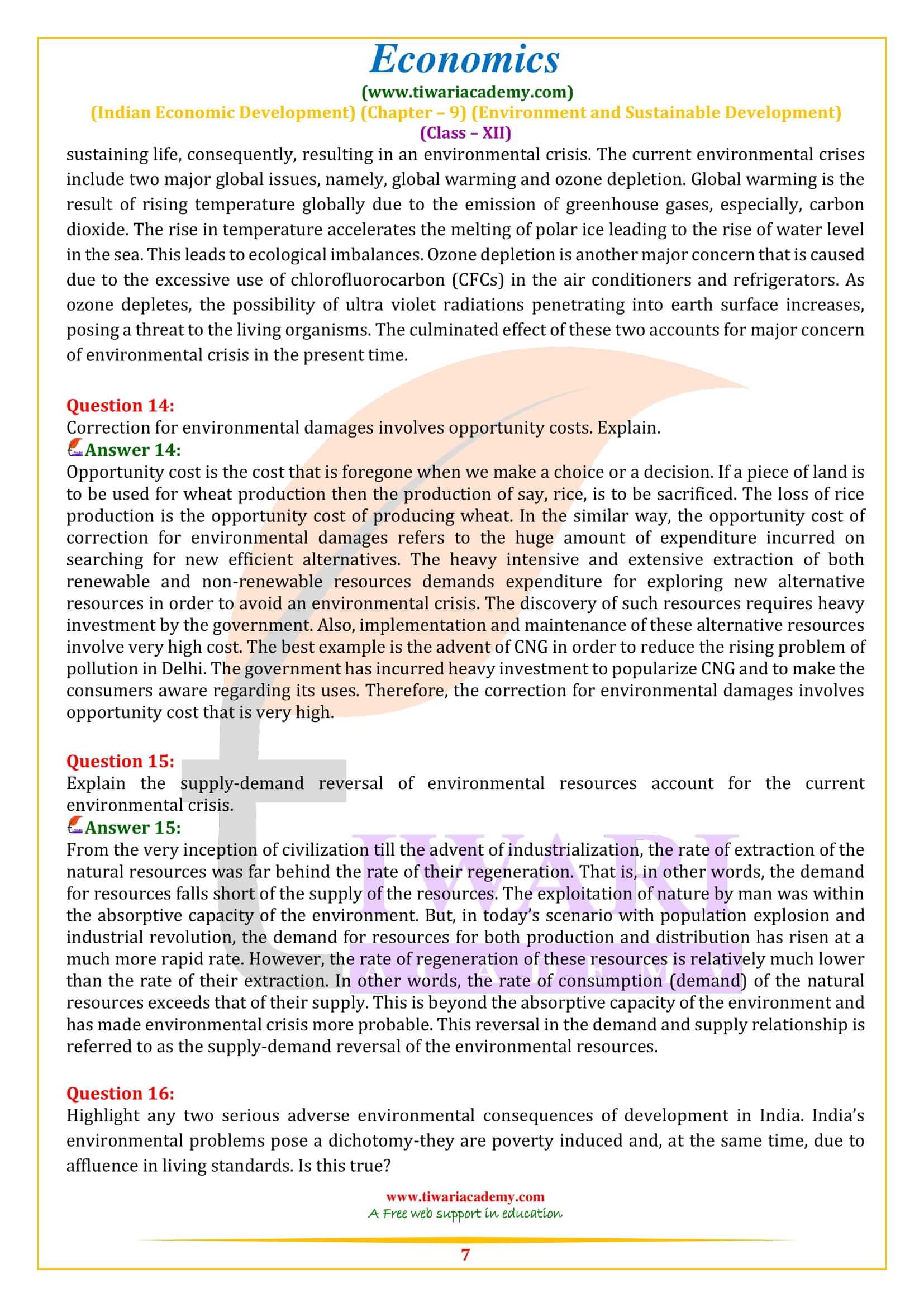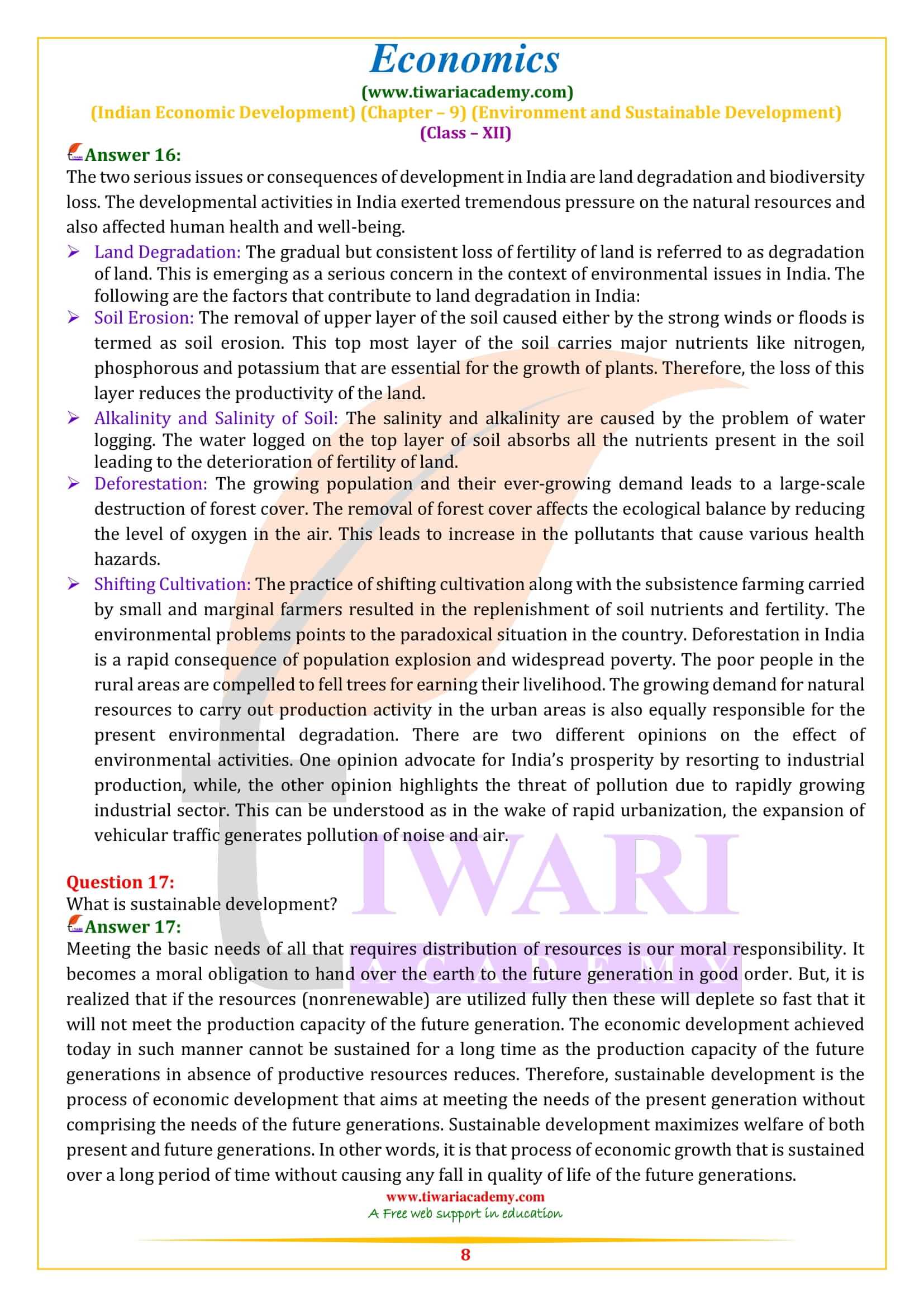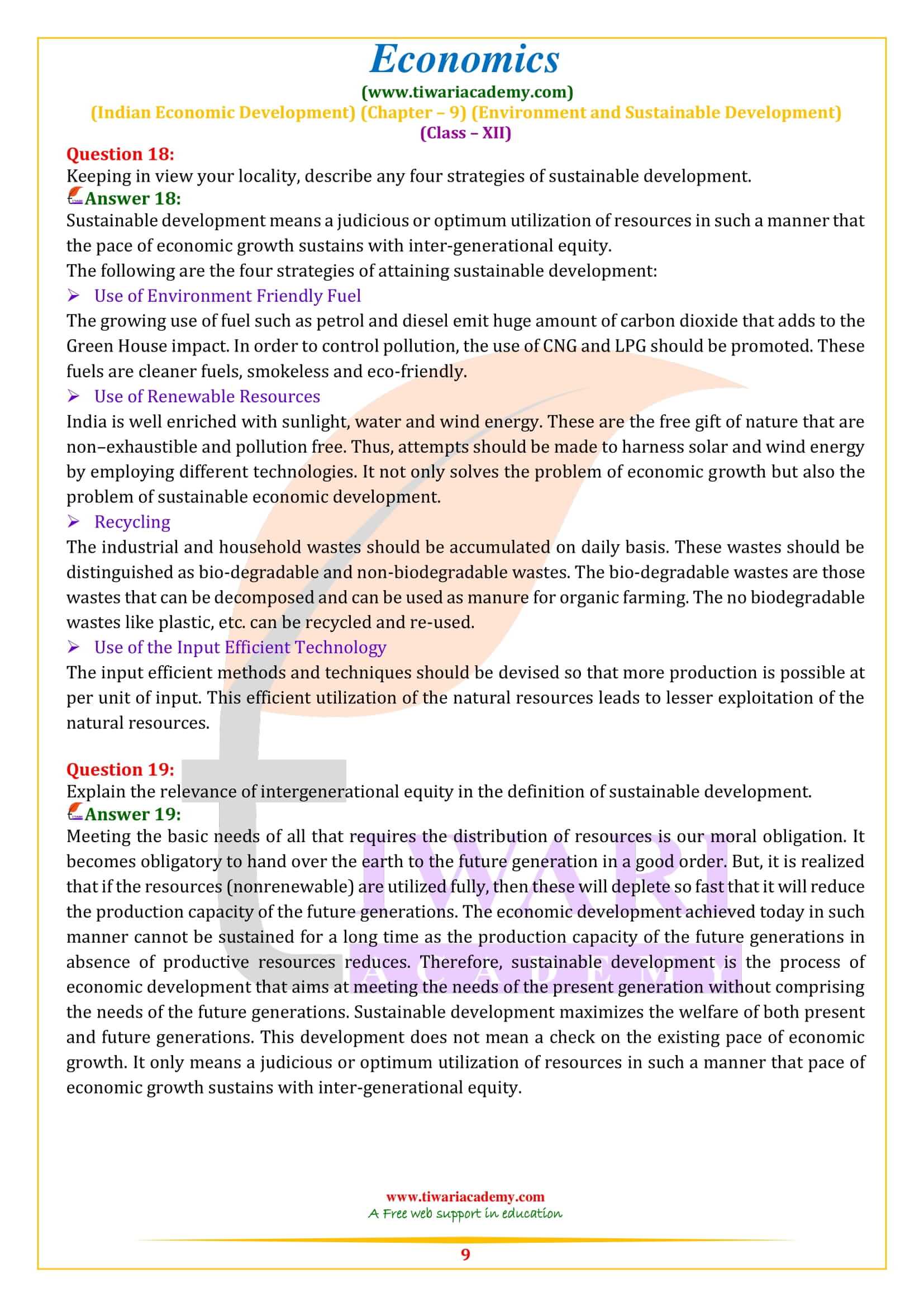NCERT Solutions for Class 12 Indian Economic Development Chapter 9 Environment and Sustainable Development in English and Hindi Medium prepared for academic session 2025-26. Class 12 Economics students can take help through chapter 9 MCQ answers during the revision.
Class 12 Indian Economic Development Chapter 9 Question Answers
Environment- Definition and Function
Environment is outlined as the total planetary inheritance and also the totality of all resources. It includes all the organic phenomenon and abiotic factors that influence one other. Whereas all living elements—the birds, animals and plants, forests, fisheries etc.—are organic phenomenon parts, abiotic parts embrace air, water, land etc. Rocks and daylight are samples of abiotic parts of the surroundings.
Benevolent development for all
A study of the surroundings then needs a study of the inter-relationship between these organic phenomenon and abiotic parts of the surroundings. Functions of the Environment: The surroundings perform four very important functions (i) it provides resources: resources here embrace each renewable and non-renewable resources. Renewable resources are those which may be used while not the chance of the resource turning into depleted or exhausted. That is, an endless provide of the resource remains accessible.
Samples of renewable resources are the trees within the forests and also the fishes within the ocean. Non-renewable resources, on the opposite hand, are those that get exhausted with extraction and use, as an example, fuel (ii) it assimilates waste (iii) it sustains life by providing genetic and bio diversity and (iv) it conjointly provides aesthetic services like scenery etc. The surroundings are in a position to perform these functions with none interruption as long because the demand on these functions is inside it carrying capability.
Factors affecting natural resources
This suggests that the resource extraction isn’t on the top of the speed regeneration of the resource and also the wastes generated are inside the assimilate capability of the surroundings. Once this can be not therefore, the surroundings fail to perform its third associate very important perform of life sustenance and this leads to an environmental crisis.
This can be the case these days everywhere in the globe. The rising population of the developing countries and also the affluent consumption and production standards of the developed world have placed a large stress on the surroundings in terms of its first two functions. Several resources became extinct and also the wastes generated are on the far side of the absorptive capability of the surroundings.
Global Warming
Global warming could be a gradual increase within the average temperature of the earth’s lower atmosphere as a result of the rise in greenhouse gases since the Economic Revolution. A lot of the recent discovered and projected warming is human-induced. It’s caused by artificial increase in carbonic acid gas and alternative greenhouse gases through the burning of fossil fuels and deforestation. Adding carbonic acid gas, methane series and such alternative gases (that have the potential to soak up heat) to the atmosphere with no alternative changes can create our planet’s surface hotter.
The region concentrations of carbonic acid gas and CH 4 have augmented by 31 per cent and 149 per cent severally higher than pre-industrial levels since 1750. Throughout the past century, the region temperature has been up by 1.1°F (0.6°C) and water level has been up by many inches.
Consequences of heating environment
A number of the longer-term results of world warming are melting of polar ice with an ensuing rise in water level and coastal flooding; disruption of water provides addicted to snow melts; extinction of species as ecological niches disappears; a lot of frequent tropical storms; and an augmented incidence of tropical diseases.
Among factors that will be tributary to warming are the burning of coal and oil products (sources of carbonic acid gas, methane, nitrous oxide, ozone); deforestation, that will increase the number of carbonic acid gas within the atmosphere; methane series gas released in animal waste; and augmented cattle production, that contributes to deforestation, methane series production, and use of fossil fuels. A UN Conference on temperature Change, held in Kyoto, Japan, in 1997, resulted in a world agreement to fight global warming that entailed reductions in emissions of greenhouse gases by industrialized nations.
Chipko or Appiko
You may remember of the Chipko Movement, that aimed toward protective forests within the chain of Himalayas. In Karnataka, the same movement took a special name, ‘Appiko’, which suggests to hug. On 8 September 1983, when the felling of trees was started in Salkani forest in Sirsi district, 160 men, ladies and youngsters hugged the trees and made the woodcutters to depart. They unbroken vigil within the forest over consecutive six weeks. Solely when the forest officers assured the volunteers that the trees are going to be cut scientifically and in accordance with the operating set up of the district, did they leave the trees.
Unfavourable changes led by industrial use
Once business felling by contractors broken an outsizes variety of natural forests, the thought of fondling the trees gave the individuals hope and confidence that they’ll shield the forests. On that specific incident, with the felling interrupted, the individuals saved 12,000 trees. Inside months, this movement unfold to several connected districts. Indiscriminate felling of trees for fuel wood and for industrial use has led to several environmental issues.
Twelve years when fixing up of a manufactory in Uttar Kanara area, bamboo has been worn out of that space. “Broad-leaved trees that protected the soil from the direct onslaught of rain are been removed, the soil washed away, and vacant laterite soil left behind. Currently nothing grows however a weed”, says a farmer.
Recognising sustainable ways
Farmers conjointly complain that rivers and rivulets dry up faster, which rain is changing into erratic. Diseases and insects earlier unknown are currently offending the crops. Appiko volunteers need the contractors and forest officers to follow bound rules and restrictions. As an example, native individuals ought to be consulted once trees are marked for felling and trees inside 100 metres of a water supply and on a slope of 30 degrees or higher mustn’t be down.
Why is the topics of chapter 9 Economics Class 12th continuously being repeated in previous class also?
In class 12th, not only do we study the concept but study how the LPG policies has adversely affected the environment. We study, the environmental challenges facing our country and strategies for sustainable development.
How is the chapter 9 of class 12 Economics important for classes other than 12th?
The topic environment and sustainable development is important for competitive exams as well. The reason is that unless we take immediate corrective action to protect our environment the economies around the globe will face disaster.
Are the students of class 12th required to study the Chipko Movement in chapter 9 Economics?
For CBSE class 12th, this is not part of the syllabus. However, this being an important topic and informs citizen should study this topic for other exams.
